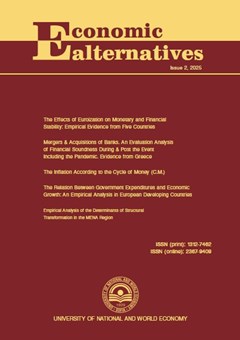The Effects of Euroization on Monetary and Financial Stability: Empirical Evidence from Five Countries
Authors: Simon Grima, Anes Kadic, Mehmed Ganic, Agim Mamuti
Abstract
This paper explores the effects of excessive financial Euroization on monetary and financial stability by using deviation from interest rate parity (dIRP) as a proxy measure of financial and monetary stability, building on the interest rate parity puzzle theory. We focus on five Central and Eastern European (CEE) EU member countries (Poland, Hungary, the Czech Republic, Romania, and Croatia) from January 2002 to December 2019. The impact of euroization parameters on dIRP is empirically tested by employing the ARDL cointegration model and the Granger causality test. Interest rate differentials and inflation were employed as additional explanatory and control variables. Results show that loan euroization and interest rate differentials greatly impact dIRP in all countries except the Czech Republic, where deposit euroization and inflation have a more significant impact. Furthermore, the causality analysis has shown that there is also a vicious circle where dIRP causes Euroization in the short run. At the same time, greater Euroization, in turn, exacerbates dIRP in the long run. This confirms that Euroization is relevant in explaining the interest rate puzzle, impacts greater dIRP among financial markets, and strives to harmonize interest rates with the euro area to maintain financial and monetary stability.

